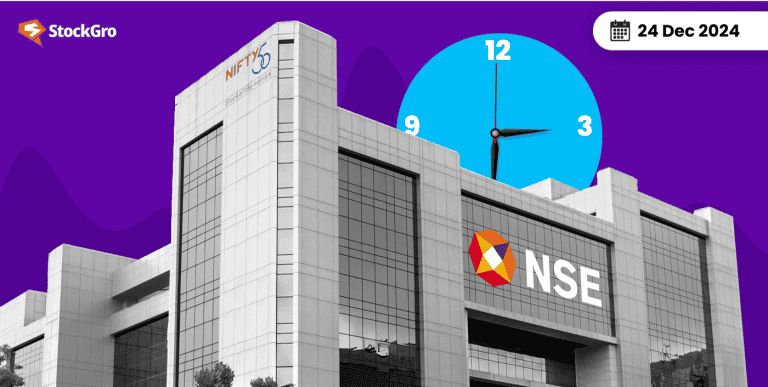
As an investor, understanding the key terms associated with a company’s Initial Public Offering (IPO) is crucial for making informed financial decisions. One such crucial term is the “cut-off price,” which often influences the IPO application process significantly. In this article, we will understand what an IPO cut-off price is and why is it crucial to your investment strategy.
Types of IPO pricing in India
India has two basic types of IPO pricing structures, they are given below:
1. Fixed price mechanism
Under this type, the company decides the IPO price ahead of time. At this pricing, the IPO is made open to the public. This system exposes the investor’s knowledge on the day of issuing. You cannot estimate share demand before the day of issuing. The SEBI-Securities and Exchange Board of India– has mandated that half of the entire share lot go to retail investors if a company uses the fixed price system.
2. Book building method
Companies use the book-building method to determine the price of their Initial Public Offering (IPO). The company provides a price range rather than a fixed price for the shares in this method. Investors place their bids within this range, specifying how many shares they will buy and at what price.
The corporation decides on the price at which the shares will be issued based on demand and bid rates. The issuer must disclose this price range in the red herring prospectus before the bidding process begins. This dynamic approach helps to arrive at an optimal price that reflects market demand.
What does the cut-off price mean?
Any price within the specified range of the IPO price might be the IPO cut-off price, which is the offer price at which investors in an IPO receive shares. Applying for the IPO at the cut-off price means an investor cannot input another price.
Usually starting with a designated price range, an IPO book-building issue allows an investor to submit bids for their intended volume in multiples of the lot size. When an investor selects the cut-off option during the issue application process, it indicates that they are willing to subscribe for shares at any price within the book-building process’ price range. This raises the chances of an allocation, enabling the investor to participate in the price discovery process.
Let’s look at an example:
Imagine Company XYZ has an IPO with a price range of ₹100 to ₹120 per share.
- If you bid at ₹110, you’ll only get shares if the final price is ₹110 or lower.
- If you choose the cut-off price, you agree to buy at the final price (within ₹100-₹120), increasing your chances of getting shares.
Selecting cut-off price while applying
When applying to an IPO, investors may bid at the cut-off price or above within the specified price range. Shares are distributed through a lottery if demand outpaces supply. Bidding above the cut-off, however, increases the likelihood of obtaining shares. For instance, the bids are as follows if the cut-off price is set at ₹ 110 and the company’s IPO price range is between ₹ 100 and ₹ 120:
At ₹110, Investor A places a bid for 100 shares.
At ₹105, Investor B places a bid for 50 shares.
At ₹115, Investor C places a bid for 25 shares.
At ₹100, Investor D places a bid for 200 shares.
Because their bids are equal to or higher than the cut-off, Investors A and B will each receive shares at the cut-off price. First to receive shares is Investor C, who is offering ₹ 115. Due to decreased demand at their price, Investor D, who bid for ₹ 100, might not obtain any shares.
The cut-off price guarantees equitable share distribution and helps match market demand with the company’s valuation.
Why is it important to know the IPO cut-off price?
Let’s now understand the relevance of the cut-off price.
- The cut-off price understanding: The cut-off price greatly determines the last price investors pay for their shares. It forms part of the process of price discovery. Sometimes the ultimate issuance price is decided upon using the demand for shares at many price ranges.
- Promotes fairness: Setting a cut-off price guarantees openness in the distribution of shares, therefore promoting fairness. Shares are more likely to be awarded to investors who submit an IPO application with a bid at or above the cut-off price. Those who offer less than that could only get a portion or no allocation.
- Minimum investment: Investors can determine the amount they have to spend on the IPO by analysing the IPO cut-off price. This helps investors decide on the lowest possible buy-share count.
- Price stability: After the stock opens trading on the secondary market, the cut-off price helps a firm and its underwriters guarantee price stability. This price floor stops strong underpricing and speculative trading.
What should you consider while choosing a cut-off price?
- Market demand
Review the market demand for the IPO before deciding on the cut-off price. If demand is high, the ultimate issue price may be closer to the top end of the pricing range.
- Financial commitment
Choosing the cut-off price could mean a larger expenditure of funds. If the maximum price is placed at the top limit, you must be sure you have the money to cover it.
- IPO valuation
Know how the IPO is valued. A higher cut-off price might not always be justified if the company’s fundamentals and future growth prospects do not match the advised value range.
Factors affecting cut-off prices in IPOs
The following are some main elements influencing IPO cut-off values:
- Investor demand
The cut-off price is largely determined by the level of investor interest in the IPO. While low demand may cause the cut-off price to be more on the lower end of the price range, high demand from institutional and individual investors can boost it.
- Market conditions
The IPO cut-off price is influenced by general market attitude and conditions. Investors in a bullish market may be ready to pay a premium, hence increasing the cut-off price.
- Company fundamentals
The company’s financial situation and future expansion possibilities after publishing the IPO are two important considerations. Strong foundations, including high earnings, sound governance, and well-defined expansion plans, can justify a higher cut-off price IPO.
- Industry trends
The company’s operating industry also shapes the cut-off price through trends inside it. If the sector is predicted to expand quickly or government policies favor it, the IPO may draw more interest and raise the cut-off price.
- Peer comparison
Investors usually look at the performance and valuations of comparable companies on the market before determining their bid.
- Speculative interest
Particularly if the IPO is thought to have great short-term upside, speculative interest occasionally can raise the cut-off price IPO.
- Promotional strategies
The cut-off price can also be affected by the degree of success the firm and its underwriters have with their marketing and promotional campaigns.
Interest rates, inflation, and GDP growth rates are economic factors that might affect investor sentiment and the initial public offering cut-off price.
Conclusion
Understanding the cut-off price is essential for investors in IPOs since it not only defines the lowest price at which shares are buyable but also becomes the pillar in pricing determination. Investors define terms by showing bids that either reach or surpass this cut-off price, actively proving their desire to invest. They stake their claim on ultimate issue prices created by demand during book-building.
FAQs
1. How to calculate the cut-off price of an IPO?
In an IPO, the cut-off price is the price at which the total demand matches the available shares. For example, if a company offers shares in the ₹100–₹120 range and demand exceeds the available shares at ₹115, then ₹115 becomes the cut-off price. Investors who apply at the “cut-off price” will receive shares at this final price.
2. Should I select the cut-off price in the SME IPO or not?
Many retail individual investors choose the cut-off price option when they cannot settle on the ideal price to bid at an IPO. This shows their readiness to apply for a given IPO at any price inside the pricing range and raises their chances of receiving an allocation.
3. What is the floor price and cut-off price?
The floor price—the lower level—at which bids for an IPO can be placed is the minimum price. Investors can bid for the Book Build IPO at any price within the firm’s determined price range. Retail investors in the Book Build process can also select the “Cut-off” price for bidding.
4. At what price should I bid for an IPO?
It is recommended to set your bids at the cut-off price. As you observed, companies will only take offers on or over the cut-off price. Placing your bids at the cut-off price will raise your chances of being allocated.
5. Is it good to buy an IPO at a cut-off price?
Yes, for ordinary investors, purchasing an IPO at the cut-off price is a wise decision. Choosing the cut-off price means you agree to buy shares at the final price following book-building. Since you are not limiting your bid to a particular price, your chances of receiving an allotment increase.

